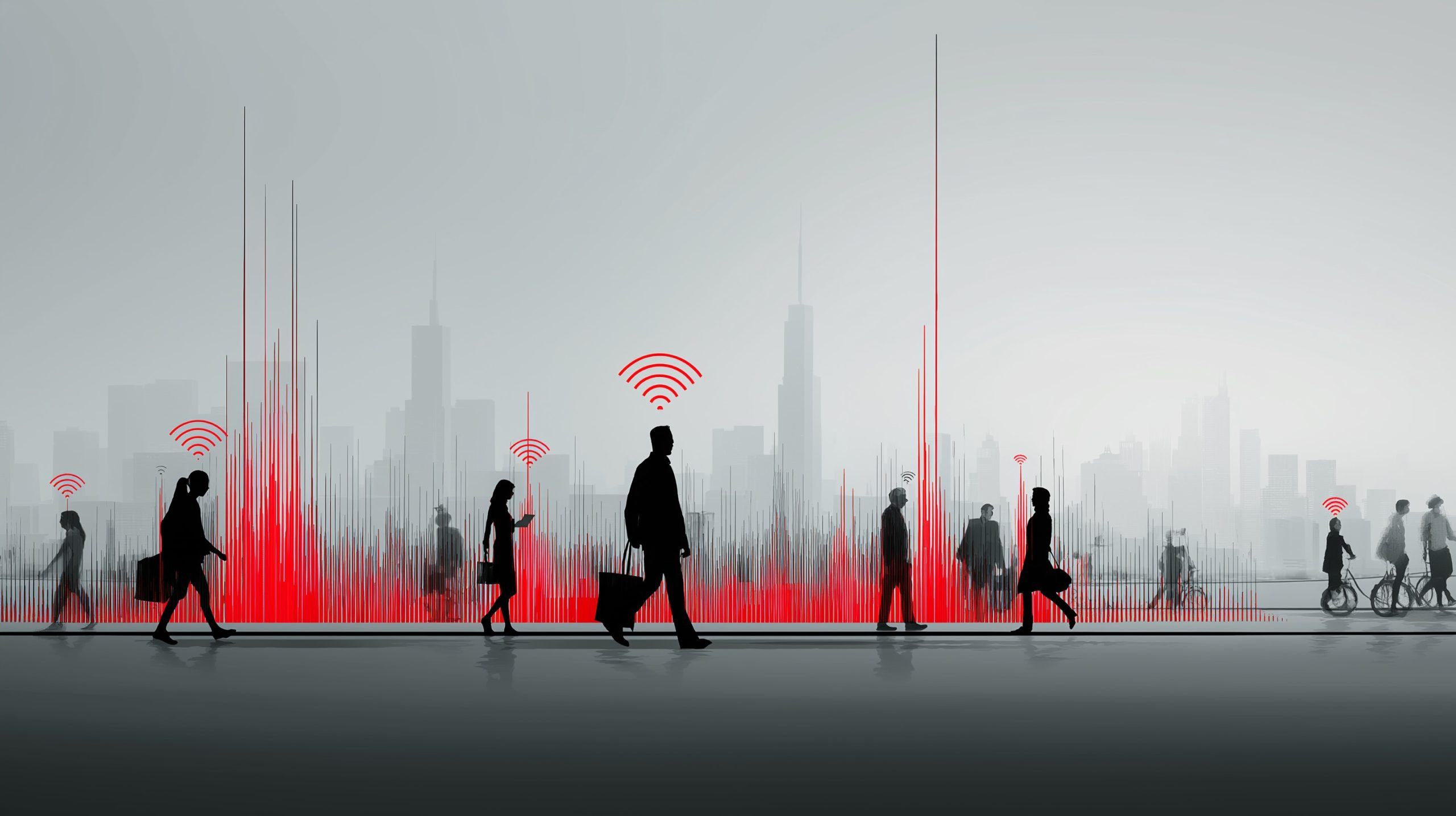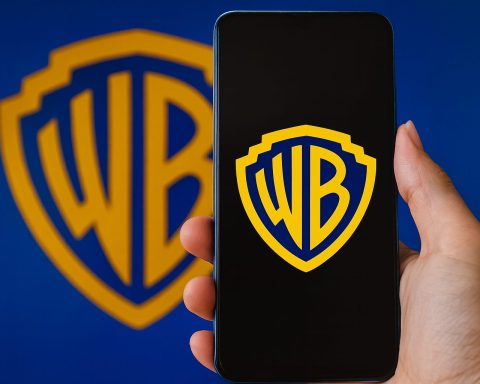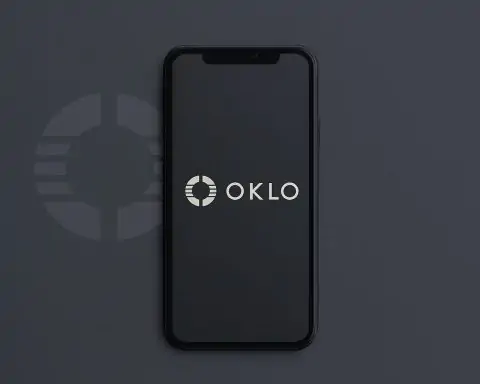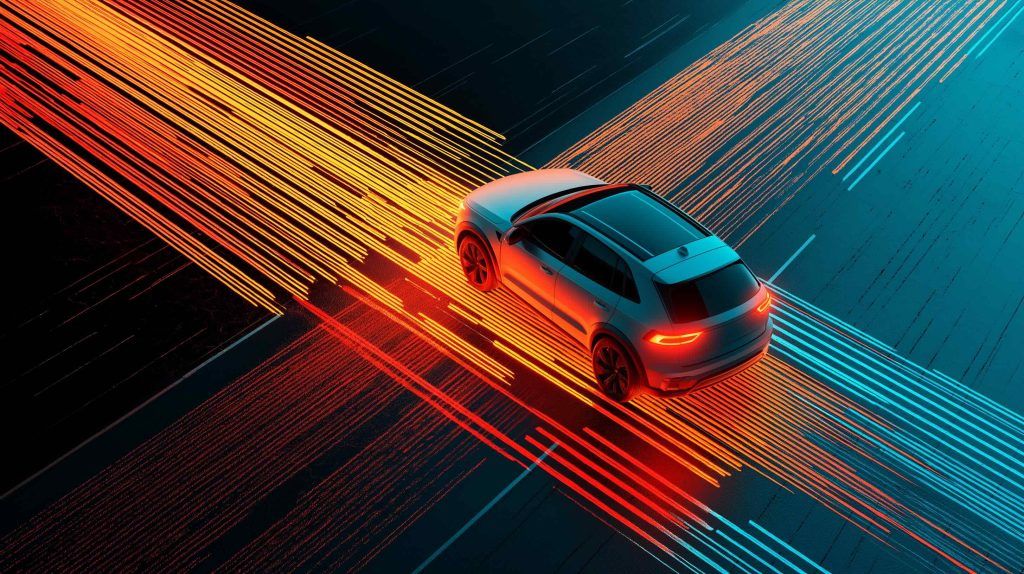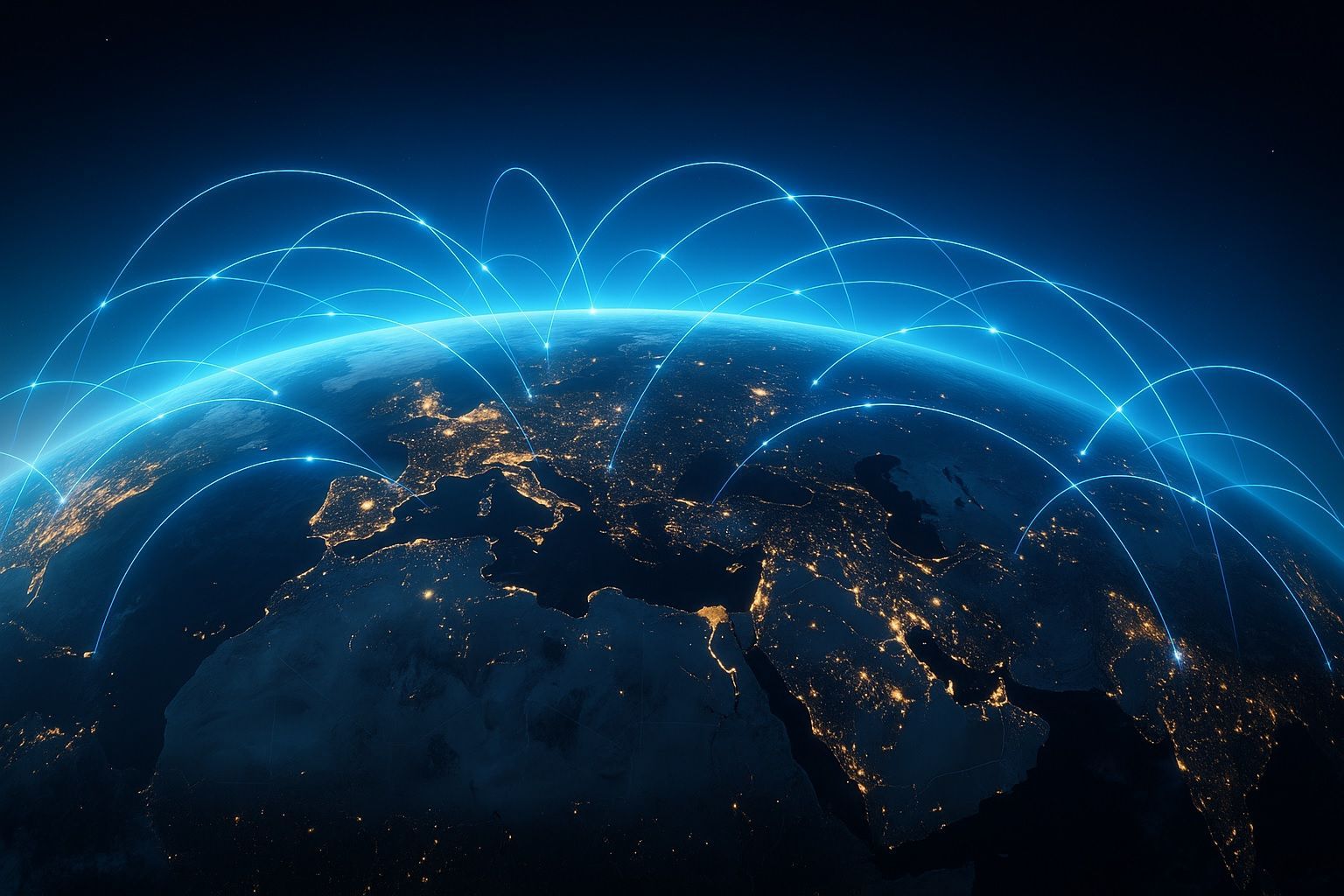- Wi‑Fi Sensing (IEEE 802.11bf) repurposes 2.4 GHz, 5 GHz, and 6 GHz Wi‑Fi signals to detect movement across a typical home, offering tens of meters of range, millisecond‑level latency, and energy‑efficient operation by piggybacking on existing routers.
- Ultra‑Wideband (UWB; IEEE 802.15.4z) uses ultra‑wide pulses around 6–8 GHz to measure time‑of‑flight with centimeter‑level accuracy, typically 10–15 meters of range, and newer Apple U2 chips extend reliable range toward 60 meters.
- 60 GHz mmWave radar like Google Soli provides high spatial resolution, detects sub‑millimeter motions within about 5–10 meters, and can distinguish fine gestures with a 120° field of view.
- IEEE 802.11bf is slated for final approval in March 2025, paving the way for standardized Wi‑Fi sensing across future Wi‑Fi 7/8 devices.
- FiRa Consortium drives UWB interoperability and the Car Connectivity Consortium standardizes UWB digital keys, with UWB chip shipments expected at 450–500 million annually by 2025.
- Infineon’s 60 GHz automotive radar solution enables accurate child presence detection for in‑car safety, supporting in‑cabin sensing in models from brands like Hyundai and Kia.
- Apple introduced UWB with the iPhone 11’s U1 in 2019, enabling AirTag precision finding, with Samsung Galaxy devices and Google Pixel phones following with UWB in later generations.
- Aqara’s FP2 mmWave radar sensor (2023) uses a 60 GHz radar to achieve multi‑person presence detection in a room, distinguishing 5–10 people.
- Google’s Soli on the Pixel 4 faced regulatory limits and limited rollout, while 60 GHz radar regulation has liberalized to enable broader indoor sensing deployments.
- Experts anticipate ISAC‑style convergence where Wi‑Fi sensing, UWB, and radar are coordinated with 5G Advanced and Wi‑Fi 7 to deliver unified sensing and connectivity.
Wi-Fi Sensing vs UWB vs mmWave Radar: The Future of Ambient Sensing Is Closer Than You Think
Imagine your home knowing you’ve arrived without a single camera, or your phone pinpointing a lost item within centimeters. A new wave of proximity and presence detection technologies is making this possible. Three contenders lead the pack: Wi‑Fi Sensing (IEEE 802.11bf), Ultra‑Wideband (UWB, like Apple’s U1/U2 chips), and 60 GHz millimeter-wave radar (Google’s Soli). Each uses invisible signals to detect motion, location, or presence in innovative ways. In this report, we compare these technologies head-to-head – from their technical specs and use cases to industry adoption and the latest breakthroughs – to see which might dominate our smart homes, gadgets, cars, and beyond.
(Spoiler: each shines in its own niche, and together they’re reshaping how our devices perceive the world.)
Operating Frequency & Technical Specs (Range, Accuracy, Latency, Efficiency)
Let’s start with the fundamentals: how each technology works and what performance it offers in terms of coverage, precision, speed, and power usage.
- Wi‑Fi Sensing (802.11bf): This upcoming standard repurposes ordinary Wi‑Fi signals (2.4 GHz, 5 GHz, and 6 GHz bands) as a sort of radar. Wi‑Fi Access Points and devices measure tiny changes in Wi‑Fi radio waves caused by people or objects moving in an environment [1]. Because it leverages existing Wi‑Fi radios, the sensing range can extend throughout a typical home (tens of meters, even through walls) – much broader coverage than specialized sensors. However, resolution is moderate: it can detect presence and motion (even breathing in some cases) but not fine gestures at these sub-7 GHz frequencies. Higher Wi‑Fi frequencies (like future 60 GHz Wi‑Fi) would improve resolution [2], though current deployments focus on common Wi‑Fi bands. Latency is low enough for real-time detection (on the order of milliseconds), but Wi‑Fi sensing snapshots are tied to Wi‑Fi transmission intervals – it’s not continuously firing pulses like a radar. A big advantage is energy efficiency and cost: no extra radio – your Wi‑Fi router doubles as a sensor – and minimal added power draw since it piggybacks on regular Wi‑Fi signals. The challenge is ensuring these dual-purpose Wi‑Fi networks can sense without slowing down your Netflix. As ABI Research’s Andrew Spivey notes, Wi‑Fi sensing “coexists alongside communications” on the same infrastructure and “must be designed to not degrade communications performance” to see widespread adoption [3].
- Ultra‑Wideband (UWB, e.g. U1/U2 chip): UWB uses very short, extremely wide-band radio pulses (across ~500 MHz bandwidth centered around 6–8 GHz) for precise ranging. Unlike Wi‑Fi, which was built for data, UWB is built for fine-grained distance and direction measurement. It operates at similar frequencies (around 6–8 GHz) but with ultra-wide spectrum usage that gives it centimeter-level accuracy. In practice, UWB devices measure time-of-flight – how long it takes a pulse to travel between devices – enabling distance accuracy on the order of 10–30 cm even in challenging indoor environments [4], and often just a few centimeters in open air. The range is decent for a personal area network: current UWB chips typically work up to about 10–15 meters reliably (Apple’s AirTag, for example, can be precision-found from ~10–30 m with the first-gen chip [5]). Newer UWB silicon dramatically extends that – Apple’s second-gen U2 chip (in the iPhone 15) roughly tripled the range over the original U1, enabling reliable tracking from 60 m or more [6]. Latency is very low: UWB ranging exchanges happen in a few milliseconds, allowing real-time interactive applications (e.g. smooth AR effects when two UWB devices approach each other). Power consumption is higher than Bluetooth or Wi‑Fi for continuous use – UWB radios send many short pulses and perform heavy signal processing. Always-on UWB can drain a battery, so today it’s used in short bursts. (One IoT expert noted UWB “draws so much power” that it’s often paired with Bluetooth to wake it only when needed [7].) The good news: newer UWB chips (per the IEEE 802.15.4z standard) improved power efficiency, and Apple’s U2 chip moving from 16 nm to 7 nm fabrication significantly cuts power use while boosting performance [8]. In sum, UWB is like a precision laser rangefinder between gadgets – ultra-accurate and fast, but at the expense of added hardware and battery drain if overused.
- 60 GHz mmWave Radar (Google Soli): Google’s Soli and similar mmWave sensors use high-frequency millimeter waves (around 60 GHz) to actively scan the environment. These sensors emit very short wavelength radio waves and listen for reflections – essentially a tiny radar on a chip. The 60 GHz waves have a limited range (a few meters up to ~5–10 m max) and don’t penetrate walls well, but they offer extreme sensitivity and spatial resolution within a room. Because the wavelength is just 5 mm, this radar can detect sub-millimeter motions – like the rise and fall of your chest when breathing [9]. Accuracy in measuring distance or movement is excellent (comparable to UWB’s centimeters, and even capturing gestures or heartbeats that Wi‑Fi or conventional sensors would miss). Soli, for instance, can distinguish fine hand gestures (like rubbing your fingers together in mid-air) and determine presence or absence of a person with high confidence. The trade-off for this precision is a short range and potential complexity: multiple antennas and careful signal processing are used to cover an area (e.g. Google’s implementation has a 120° field of view and ~6 m range [10] [11]). Latency is very low – radar reflections come at the speed of light and can be processed continuously, which is why Soli could register a hand wave instantaneously to skip a song. Power consumption depends on usage; the radar can run in low-power mode until motion is detected. Still, integrating a 60 GHz radar in battery-powered devices is challenging – the Pixel 4’s Motion Sense (the first phone with Soli) was innovative but contributed to the phone’s poor battery life and was disabled in some countries due to spectrum regulations [12] [13]. Newer 60 GHz radar chips aim for lower power: for example, Infineon’s latest 60 GHz sensors boast high precision with low power consumption in a tiny package [14]. In summary, mmWave radar provides a localized, high-resolution sensing capability – essentially a “sixth sense” for devices to detect minute movements and presence in their immediate surroundings, with the limitation of short range and added hardware cost.
Applications and Use Cases
These technologies aren’t just science projects – they’re finding real uses across consumer electronics, homes, cars, and industry. Here’s how each stacks up in key domains:
Smart Homes & IoT
In the home, all three technologies promise more intelligent, hands-off automation and security:
- Wi‑Fi Sensing: Turns your Wi‑Fi network into a house-wide occupancy sensor. By analyzing Wi‑Fi signal disturbances, a router with 802.11bf can detect if someone is in a room, moving or even breathing – without cameras or wearables. This is ideal for security (e.g. alerting on movement when you’re away) and energy savings (turning off lights/HVAC in empty rooms). It’s already used in some smart home services; for example, Comcast and Plume have integrated Wi‑Fi motion detection into home monitoring offerings [15]. In healthcare, Wi‑Fi sensing is being tested to unobtrusively monitor seniors (detecting falls or changes in activity) [16]. The appeal is that everyone already has Wi‑Fi – with a software update, your router becomes a motion sensor covering the whole home. As one industry group notes, Wi‑Fi sensing can enable everything from people counting to breathing monitoring in smart environments [17]. The downside: it might not pinpoint who or exactly where a person is – just that movement occurred – and fast, fine gestures (like hand waves) are generally beyond its resolution without specialized hardware [18].
- Ultra-Wideband: UWB isn’t typically blanketing homes with coverage, but rather enhancing smart gadgets and asset tracking. The quintessential use is item finders like Apple’s AirTag or Samsung’s SmartTag+: attach a UWB tag to your keys or wallet, and your phone can guide you with arrow directions and distance readouts. This works indoors where GPS fails – UWB’s precision makes the Find My experience feel almost magical, honing in within inches of the lost item. In smart homes, UWB is being explored for hands-free access control (e.g. UWB-enabled smart locks that unlock when you approach with your phone in pocket [19]) and for device interaction – imagine pointing your phone at a smart speaker to transfer music, a concept both Xiaomi and Apple have demoed. UWB can also enable room-level context: for instance, Apple’s HomePod uses UWB to sense when your iPhone is nearby and seamlessly hand off audio [20]. The technology shines when you have two devices talking to each other. It’s less used for “ambient” sensing of unworn people (since one of the devices usually needs to be a tag/phone). However, future smart home devices like motion sensors or thermostats might include UWB to locate and identify the occupant (for example, identifying which family member is in the room if each carries a UWB-enabled device). For now, the consumer UWB ecosystem is driven by personal electronics, but as the FiRa Consortium standards mature, we may see more UWB in home IoT (smart TVs, appliances, etc.) for precise spatial awareness [21].
- 60 GHz Radar (Soli and others): mmWave radars are emerging as powerful presence detectors in smart homes. Unlike Wi‑Fi, they cover only one room but with much greater detail. Google’s Nest Hub (2nd gen), for example, has a Soli radar to track your sleep – it can monitor your movement and even respiratory rate through breathing motions without any wearable [22]. It also enables gesture controls (e.g. silencing an alarm with a hand wave) and can detect if someone is approaching the device (to adjust display brightness or greet you). Beyond Google, standalone mmWave presence sensors are coming to market: Aqara’s new FP2 sensor uses a 60 GHz radar to achieve “multi-person” detection, distinguishing up to 5–10 people in different zones of a room based on their subtle movements [23]. This is a big upgrade from traditional PIR motion sensors which go blind if you sit still – a mmWave sensor can tell you’re present just from micro-movements or breathing. Smart home scenarios include automatically turning on lights or media when people are present, climate control per room occupancy, fall detection (a radar can notice a sudden large motion like a fall and lack of subsequent movement), and even gesture-based control of appliances. The Soli radar in Pixel phones was used to skip music tracks with a swipe or to detect if you’re reaching for the phone (to pre-activate the face unlock). While that specific use was limited, it hints at how touchless gesture control in the home (for TVs, smart displays, etc.) could work – no need to find a remote. The key advantage of radar here is privacy: it detects that someone is present or moving, but unlike a camera it doesn’t identify you visually. For privacy-conscious scenarios like bedrooms and bathrooms, or generally anywhere you’d prefer not to have cameras, a hidden 60 GHz sensor can still enable smart responsiveness. Expect to see more of these mmWave sensors in home IoT as their cost comes down.
Smartphones & Wearables
Our personal devices are getting spatial awareness, and here UWB has made the biggest splash so far:
- UWB in Phones: Since Apple introduced the U1 chip in the iPhone 11, UWB has quietly become a staple in premium smartphones. By 2024, an estimated 60% of all UWB chips were shipping in smartphones [24] – Apple leading the charge, with Samsung and Google joining in their flagships. What do our phones do with UWB? A lot of the use cases revolve around device-to-device interactions: AirDrop file sharing now prioritizes people you point your iPhone at. Apple’s UWB-guided AirTag tracking via an iPhone is the prime example of precise locating. Digital car keys are another growing use – many iPhones and some Samsung models can unlock luxury car models via UWB (which is far more secure and precise than Bluetooth). Google’s Pixel phones added UWB hardware too (the Pixel 6 Pro onward) mainly for future-proofing such features (they have tested UWB for digital car keys and Nearby Share, though it’s not as front-and-center as on Apple devices). On the Android side, Xiaomi showcased using UWB to control IoT devices by pointing your phone at them – an intuitive idea where your phone “knows” you’re facing the living room lamp, for instance, and can bring up its controls. For now, these are early-stage demos. UWB’s role in smartphones is poised to expand: AR and spatial computing will likely lean on UWB for coordinating devices. Apple’s Vision Pro headset (coming in 2024) will work with iPhones, and analysts say a key to seamless integration will be Wi‑Fi 7 and UWB for high-bandwidth, low-latency linking [25]. In short, UWB is becoming a standard smartphone capability, much like GPS or Bluetooth – mostly operating behind the scenes to enable ultra-precise positioning and directional awareness in apps.
- Wearables: UWB is also making its way into wearables. Apple has included the U1 chip in the Apple Watch (Series 6 and later) [26], which can be used to unlock your car or automatically unlock your iPhone/Mac when you approach, thanks to ranging. We may see future AR glasses or VR headsets use UWB to understand where they are relative to other devices or controllers. On the other hand, Wi‑Fi sensing isn’t yet a factor in wearables – wearable devices typically use Bluetooth for proximity (like your smartwatch knowing when it’s near your phone), but they could in theory use Wi‑Fi signals for gesture recognition (an area of research, not product, as of now). Radar on wearables remains experimental: Google ATAP once demoed a Soli radar in a smartwatch that could sense tiny finger movements as input. That hasn’t hit the market, but it shows the potential for micro-gesture controls (imagine pinching your fingers to scroll on a smartwatch without touching it). Power and size constraints are big considerations – packing a 60 GHz sensor into a small battery-powered wearable is tough. For now, Apple’s approach of using UWB in wearables (for positioning) and cameras or other sensors for gesture (e.g. Vision Pro’s hand tracking uses cameras) seems to be the path. Still, as radar tech shrinks, a future fitness band that monitors your heartbeat via radar (no contact on skin needed) or earphones that use tiny radar for spatial audio detection are not out of the question.
Automotive
Modern cars are quickly adopting wireless tech for both convenience and safety, and each of our three contenders plays a role:
- UWB – Digital Keys and Beyond: UWB is gearing up to replace your car keys. High-end vehicles from BMW, Mercedes, Audi, Tesla and others have started including UWB in their cars and key fobs or partnering with phones for smart entry systems [27]. With a UWB digital key, your car can precisely detect when you (or rather, your phone) is next to a door and unlock it, or even prevent a relay-hack theft (where thieves amplify key signals) because UWB’s distance measurement can’t be fooled easily. As of 2024 about 6% of new cars shipped were UWB-enabled, and forecasts suggest that could rise to 40% by 2030 [28] as automakers adopt the standardized Car Connectivity Consortium (CCC) protocol for UWB keys [29]. In practice, Apple and Samsung phones now support these digital keys for certain car models – you can walk up and get in without taking your phone out, and even start the engine if the phone is inside. Beyond keys, the next frontier is in-cabin sensing. Regulators in the EU and US are considering mandates for Child Presence Detection (CPD) – to alert if a baby or pet is left in a hot car. UWB is one candidate for this: in radar mode UWB could detect micromotion (breathing) on the back seat. In fact, industry experts suggest upcoming UWB chip versions will incorporate radar-like sensing capabilities for automakers to meet CPD requirements [30]. This would go beyond the current ranging between devices, using reflections off a child’s body. Whether UWB or another radar is used, it shows that the lines between these technologies can blur in cars. For now, expect your phone’s UWB to replace your key fob, and down the road possibly serve as one node in a safety sensor system within the vehicle.
- 60 GHz In-Cabin Radars: Even before UWB radar arrives, traditional mmWave radar is finding a niche inside cars. Because 60 GHz is unlicensed and can be made very small, car makers and suppliers have been testing tiny radars in the cabin for presence detection. These can sense a heartbeat or slight motion of a sleeping child in a car seat. Infineon, for example, offers a 60 GHz automotive radar solution specifically for accurate child presence detection to prevent heatstroke tragedies [31]. These radars sit in the overhead console or roof and scan the interior. They’re sensitive enough to differentiate between a bundle of clothes and a live child (by detecting respiration). Some cars (like certain Hyundai and Kia models, and others in Europe) already employ radar-based rear seat occupant alerts. Unlike ultrasonic sensors (another approach), 60 GHz radar isn’t affected by loud noises and can cover the whole cabin. Outside the car, higher-power radars (77 GHz) are used for parking and collision avoidance, but those are a different class. The focus here is inside: mmWave radar can make the car interior responsive – for instance, if you’re reaching towards the infotainment screen, a radar could detect that intent and highlight buttons (Audi showed concepts like this). Gesture control in cars via radar is also explored (BMW once had gesture control using a 3D IR sensor; radar could do similar with less light interference). However, radar hasn’t become mainstream in dashboards yet. As safety mandates push adoption, you’ll likely see “radar inside” stickers on cars by the mid-2020s, using 60 GHz tech to save lives and add convenience.
- Wi‑Fi Sensing in Vehicles: This is less of a thing – cars do have Wi‑Fi (hotspots, etc.), but using it for sensing isn’t reported in commercial use. It’s conceivable that a parked car could use Wi‑Fi sensing to detect someone around the vehicle (as a security perimeter) or even inside (if devices inside bounce signals). But automakers have tended to use dedicated sensors (radar, ultrasound, cameras) for those tasks. One could imagine future car-to-home integration: as you park in your driveway, your phone or car’s Wi‑Fi could signal your smart home that you’ve arrived (presence detection triggering routines). But that strays into IoT integrations more than pure Wi‑Fi sensing. So, in vehicles, Wi‑Fi’s role remains connectivity, while UWB and mmWave radar handle the spatial sensing duties.
Industrial & Commercial
Beyond consumer gadgets, these technologies are transforming various industries by enabling smarter monitoring and automation:
- Industrial and Retail (UWB as the RTLS King): In warehouses, factories, hospitals, and mines, knowing the real-time location of assets and people is gold. UWB has long been used in these Real-Time Location Systems (RTLS) because of its accuracy and reliability. Long before UWB was in phones, companies like Decawave (now Qorvo) sold UWB tags and anchors to track equipment and personnel with ~10 cm accuracy indoors [32]. Forklifts, for example, can be tagged to avoid collisions, or tools in a factory can be located instantly. While the consumer UWB boom is recent, industrial UWB has been proving itself for over a decade. The adoption in industry is steady but slower – these sectors move carefully and integrate gradually [33]. Now, with billions of UWB chips shipping for phones, the ecosystem (and cost) is even more favorable for industry. There’s even an open standard omlox to unify UWB tracking systems, which saw an update in 2023 to improve interoperability in industrial setups [34]. We’ll likely see UWB tags become cheaper and more common in retail (for inventory management – tracking items on shelves or shopping carts) and in logistics (tracking parcels in a warehouse). And since UWB can also carry some data, it might double as a communication method for industrial IoT sensors. In short, UWB is becoming the “indoor GPS” for factories and enterprises, delivering precise location where GPS can’t reach.
- Wi‑Fi Sensing in Commercial Spaces: Wi‑Fi sensing could find use in offices and retail for occupancy analytics. Imagine smart buildings that adjust HVAC based on where people are, or stores that use Wi‑Fi signal changes to estimate foot traffic and dwell time in front of displays. Since Wi‑Fi is everywhere, businesses could use it for insights without deploying new hardware. There are pilots where Wi‑Fi sensing counts people in large spaces or even assists in intrusion detection after hours. One report notes the industry envisions applications from people counting to even identifying individuals by their movement patterns [35]. That latter is experimental (using AI on Wi‑Fi signals to recognize a person’s gait, for example). A more immediate commercial use is in elder care facilities – an example in Japan has Wi‑Fi sensing deployed to monitor patient activity and prevent falls, via startup Nami and others [36]. The appeal is using existing Wi‑Fi infrastructure rather than installing many motion sensors or cameras. As the standard 802.11bf solidifies, we may see enterprise-grade access points advertising “integrated sensing” features. Service providers (like ISPs and managed Wi‑Fi providers) are also looking at offering sensing-as-a-service layered on Wi‑Fi – for security monitoring or smart building automation – potentially unlocking new revenue streams [37]. So, while not as sexy as UWB or radar, Wi‑Fi sensing could quietly pervade commercial environments because of its low barrier to entry.
- Radar in Industry: Traditional radar (at various frequencies) is already used in industrial sensors (level transmitters, motion detectors, etc.), but 60 GHz radar could bring more granular monitoring. For instance, a manufacturing line could use a mmWave radar to ensure a human isn’t too close to a robot arm (as a safety curtain), or an office could use it for hot-desking presence detection (to see which desks are occupied without cameras). Retail stores might use ceiling-mounted 60 GHz units to track how shoppers move (less intrusive than video analytics). Even in agriculture, short-range radar can monitor machine parts or detect livestock movement. These are speculative compared to UWB’s well-established role, but as chipmakers like Infineon and TI produce easy-to-integrate radar modules, creative industrial uses are likely to emerge. One interesting application area is health monitoring: a mmWave radar can measure heart rate and respiration of multiple people without contact. Hospitals or smart home-health devices might use this for vitals monitoring – indeed, research with Google Soli has demonstrated contactless heart-rate monitoring during sleep [38]. So radar could carve a niche in healthcare settings where constant, non-intrusive monitoring is needed.
Ecosystem and Adoption Status
How widely are these technologies being adopted, and how easy are they for developers and manufacturers to implement? The ecosystem maturity varies:
- Wi‑Fi Sensing – On the Brink of Standardization: Wi‑Fi sensing is just about to hit prime time. The IEEE 802.11bf standard – the official Wi‑Fi Sensing spec – is scheduled for final approval by March 2025 [39]. Once in place, any new Wi‑Fi 7 (or future Wi‑Fi 8) chips that implement it will be able to perform sensing in a standardized way. This means interoperability: your phone or smart speaker could cooperate with your router to detect motion, regardless of brand. Big industry players are involved: companies like Huawei, LG, Ericsson, and even Meta have been key contributors to the 802.11bf task group [40], indicating broad interest (Meta might see uses in VR/AR or home devices, for example). Separately, the Wireless Broadband Alliance has a Wi‑Fi Sensing working group including Comcast, Cisco, and others [41], which suggests that Wi‑Fi sensing may first appear via ISP-provided routers and enterprise APs. Indeed, startups like Origin Wireless and Cognitive Systems (who pioneered Wi‑Fi motion detection algorithms) have partnered with router makers and service providers to roll out proprietary solutions ahead of 802.11bf [42]. For instance, Cognitive’s tech underpins Plume’s HomePass motion sensing service across millions of deployed routers [43]. Right now in 2025, we’re at an inflection: the ecosystem is rich with early solutions but not yet unified. As soon as the standard is ratified, expect a wave of firmware updates and new “Wi‑Fi Sensing Certified” devices. Developer access is currently limited – only those working with specific vendor SDKs (like Cisco’s or Qualcomm’s test kits) can tinker with Wi‑Fi CSI (Channel State Information) data. But in the near future, we could see APIs exposed in smart home platforms or operating systems to tap into Wi‑Fi sensing data for presence events. Bottom line: adoption is nascent but poised to grow rapidly. Analysts forecast over 100 million Wi‑Fi sensing-capable devices (routers, etc.) in the field by 2030 in North America alone [44] [45]. Given Wi‑Fi’s ubiquity, this tech could scale fast once the kinks (coexistence and privacy concerns) are ironed out.
- Ultra-Wideband – From Niche to Near-Ubiquity: UWB has undergone a transformation from a niche industrial tech to a mainstream feature, thanks largely to smartphone adoption. Apple’s U1 chip (2019) was a turning point – now hundreds of millions of devices have UWB. Apple expanded UWB into the Watch, HomePod Mini, and AirTag, creating a sizable ecosystem where devices can range with each other [46]. Samsung followed (Galaxy Note20 Ultra, S21+/Ultra, S22/23 Ultra, etc. include UWB), and Google and Xiaomi have joined in. This means if you buy a flagship phone today, chances are it’s UWB-equipped – even if you as a user don’t directly notice it. On the standards side, UWB is quite organized: it’s built on IEEE 802.15.4a/z (for the physical and MAC layers) and consortia define higher-level protocols. The FiRa Consortium (with members like Samsung, NXP, Sony, etc.) has created a common interoperability standard so that UWB from different manufacturers works together for things like access control and position-based services [47]. Version 2.0 of FiRa’s spec came in 2024, enabling many more use cases than the initial version, which suggests more cross-brand UWB applications will roll out [48]. Meanwhile, the Car Connectivity Consortium (CCC) standardized Digital Key using UWB – Apple, Google, Samsung, BMW, etc. all adhere to it, so your phone’s car key will work across brands of cars and phones [49]. In short, UWB’s ecosystem is robust and growing: multiple chip suppliers (Apple’s in-house, NXP, Qorvo/Decawave, Qorvo, Samsung’s, etc.), multiple platform APIs (Apple’s Nearby Interaction framework [50], Android’s UWB API), and increasing developer awareness. Already, startups are building UWB-based products (from smart locks to indoor drones). By 2025, market reports estimate 450–500 million UWB chips shipped annually [51], and this could accelerate as more mid-tier devices adopt it. One caveat: Apple’s UWB is partly walled – they allow third-party accessory makers (via their Made for iPhone program) to use the U1 for Find My network, but broader access (for say an Android phone to interact with an Apple UWB device) will depend on FiRa standards and both sides enabling it. We’re getting there – slowly breaking silos so UWB can be universally used like Bluetooth. With new features on the horizon (the next IEEE 802.15.4ab due in 2025 aims to enable lower power and even audio streaming over UWB [52] [53]), the ecosystem may soon move beyond “finding and unlocking” towards high-data-rate uses (imagine wireless AR/VR headsets or lossless audio transmission via UWB). In summary, UWB has momentum: strong industry backing, standards in place, and a fast-growing install base in phones, cars, and gadgets. It’s no longer an exotic tech – it’s quietly becoming a connectivity staple.
- 60 GHz Radar – Niche but Expanding: The mmWave radar ecosystem is more fragmented. Google’s Soli brought a lot of attention to 60 GHz sensing in 2019, but after the Pixel 4, no other phone maker has integrated a similar radar. Google itself limited Soli’s use to certain regions (regulatory approvals were needed since 60 GHz was not open everywhere initially) [54] and then dropped it from subsequent Pixels, focusing its use in the smart home device realm. That said, the underlying tech is advancing. Companies like Infineon (XENSIV line) and Texas Instruments are producing tiny 60 GHz radar chips and offering them to any interested hardware makers [55]. These are used in some laptops (for example, to detect user presence and wake up the screen when you approach) and in IoT devices like the aforementioned Aqara presence sensor. The cost of these radar modules has been coming down, and they are designed to be low-power and compact, making them viable in battery-powered sensors or compact electronics [56]. There isn’t a unifying standard akin to Wi‑Fi or UWB – each vendor might have its own API and signal processing pipeline. Developer access is mainly for those building hardware or using vendor evaluation kits (e.g., you can buy a $20 radar module and get an SDK to play with detection zones, etc.). Google did not (so far) open up a public Soli API for Android beyond some limited gesture controls on Pixel 4, so app developers haven’t been able to tap phone-based radars broadly. Thus, in 2025 radar’s ecosystem feels a bit like a Wild West: strong potential, various players, but not a lot of coordination or consumer awareness. Still, the use cases are compelling enough that we’re seeing adoption in specific verticals (smart home sensors, automotive in-cabin sensors). It’s telling that Google kept investing in Soli for Nest devices – indicating they see value outside of just gimmicky phone gestures. Regulation has also become more permissive: the FCC and other agencies now allow low-power 57–64 GHz devices for indoor use in many regions, which was a hurdle initially. Going forward, if radar sensors demonstrate must-have features (like reliable fall detection or truly convenient gesture control), more OEMs will include them. They might also piggyback on other tech – e.g., a Wi‑Fi access point could in theory include a 60 GHz radar for fine sensing (since some Wi‑Fi 7 chips also support 60 GHz WiGig, which could be dual-purposed for sensing). So while mmWave radar is currently the most niche of the three, it’s gradually spreading in stealthy ways. Keep an eye on it: the idea of devices that literally sense your motions in 3D space is a pillar of sci-fi-esque interactivity, and the pieces are falling into place for radar to deliver on that in everyday life.
Recent Developments (2024–2025) and What’s Next
The last two years have seen significant leaps for all three technologies. Here are some notable recent advancements and upcoming milestones:
- Wi‑Fi Sensing: Originally projected to finalize in 2024, the 802.11bf standard is now on track for approval in early 2025 [57]. This slight delay hasn’t stopped progress in the field – companies are already testing features against the draft spec. For instance, 2024 saw more pilot programs like Nami’s elderly care trials in Japan using Wi‑Fi sensing to monitor patients [58]. The technology also got a boost in credibility: industry analysts are bullish, with ABI Research expecting over 50% annual growth in Wi‑Fi sensing deployments the rest of this decade [59] [60]. Big router makers have started advertising motion sensing capabilities in high-end mesh systems (some TP-Link and Linksys models, for example, offer motion alerts via Wi‑Fi). Looking ahead, once 802.11bf is official, we may see firmware updates enabling sensing on Wi‑Fi 6/7 routers already in homes – especially those with the necessary hardware hooks. One thing to watch is the role of the new 6 GHz Wi‑Fi band: wider channels (160 MHz or 320 MHz in Wi‑Fi 6E/7) mean better resolution for sensing. Regions that opened up 6 GHz will get more refined Wi‑Fi sensing, whereas those stuck on 2.4/5 GHz might see coarser results [61]. Another development: privacy and regulation. In 2024, the FCC and other regulators began examining Wi‑Fi sensing specifically to ensure it can operate without causing interference (since it uses existing Wi‑Fi frequencies). So far it looks favorable, but expect guidelines on how often a device can transmit sensing pings, etc. On the consumer side, 2025 might bring the first wave of apps and services leveraging Wi‑Fi sensing – perhaps as part of smart home systems (e.g. your Nest or Alexa app alerting you to movement via the Wi‑Fi mesh). By the end of 2025, we’ll likely see new Wi‑Fi 7 routers launching with a checkbox feature: “Supports Wi‑Fi Sensing (802.11bf)” as a selling point, heralding a new dual-use era for Wi‑Fi.
- Ultra-Wideband: UWB has been accelerating quickly. Late 2023 brought Apple’s U2 chip in the iPhone 15 – a notable upgrade that boosted range and efficiency for UWB [62] [63]. In practical terms, this new chip can maintain precise ranging at up to 60 m (200 feet), where older U1 devices were limited to ~10–30 m. This improves experiences like Find My – indeed, Apple’s next-gen AirTag 2 (expected in 2025) is reported to take advantage of U2 to nearly triple its tracking range (from ~30 m to about 60–90 m in open conditions) [64] [65]. Apple is also doubling down on UWB’s role in its ecosystem: Ming-Chi Kuo, a noted tech analyst, highlighted that Vision Pro (Apple’s AR headset) will heavily rely on UWB and Wi‑Fi for integrating with other devices, calling UWB connectivity one of the “key success factors” for the headset’s ecosystem [66]. On the Android side, Samsung in 2023 launched new SmartThings Station hubs and SmartTag 2 trackers that use UWB, and Google enabled digital car keys with UWB in Android 13 – indicating the software support is catching up. Automotive news: 2024 saw the first CCC-certified interoperable digital keys (BMW and NXP got certified) [67], meaning your phone-as-key will work more universally in the future. Plus, regulators are encouraging UWB for in-car safety: Europe in 2024 updated radio rules to allow higher UWB transmission power and even some outdoor usage [68]. The EU boosted allowable UWB signal strength by 10 dB, which can significantly extend UWB’s range and reliability [69] – great news for applications like indoor navigation or vehicle uses. China also finalized new UWB regulations in 2024, aligning with global norms and essentially pushing UWB devices to use the higher 8 GHz band going forward [70]. These regulatory moves are important because they harmonize the spectrum usage, so UWB devices can work globally without changes, and they potentially allow new use cases like outdoor localization (previously, UWB was mostly indoor-only by law). On the silicon front, multiple new UWB chips launched in 2024–25, many with lower power aims – one even touts the ability to stream audio, hinting at UWB-based wireless earbuds in the future [71] [72]. Summing up: UWB’s recent trajectory is steep – more chips, more range, more devices, more standards. By 2025/2026, experts predict UWB will transition from a special-feature to a “core connectivity standard, much like Wi‑Fi and Bluetooth,” driving new location-based services industry-wide [73].
- 60 GHz Radar (Soli and others): While quieter than the other two, mmWave radar technology has also progressed in 2024–2025. Google kept improving its Soli-based features: notably, the Nest Hub’s sleep tracking (using radar) was refined and, recognizing its value, Google decided to keep it subscription-free for users through 2023 and beyond [74]. This suggests they’re gathering more data and confidence in radar for wellness monitoring. In the consumer gadget arena, the most visible advancement was the proliferation of third-party mmWave presence sensors like Aqara’s FP2 (2023). The FP2 earned praise in smart home communities for reliably detecting humans even when stationary, and for features like defining multiple detection zones in one room. Its use of a more powerful 60 GHz chip (TI IWR6843) that can track up to 10 people at once in a room [75] showed the capability of modern radar silicon. We’re likely to see competing smart home radar sensors from other brands (for example, Google’s rumored next-gen Nest Thermostat is said to include a Soli radar for better presence sensing). In automotive, 2024 saw more carmakers confirm radar-based child presence systems for upcoming models (many are supplier-driven; for instance, a Tier-1 supplier might offer a radar kit that multiple brands use under the hood). By 2025, it’s expected that a number of new cars will quietly include 60 GHz interior sensors to comply with potential EU regulations on child detection. On the regulatory side, where Soli once needed special FCC permission, now 60 GHz short-range radars have a general green light in most markets for indoor/in-cabin use, simplifying deployment. One cutting-edge development: researchers are exploring fusion of radar with other sensors – for example, combining a 60 GHz radar with a camera feed to enhance gesture recognition robustness (the radar adds depth/motion data to supplement vision). It wouldn’t be surprising if future AR/VR devices incorporate a tiny radar to complement their camera-based hand tracking, ensuring reliability in low-light or occlusions. Overall, mmWave radar is still waiting for its “iPhone moment” – a breakout consumer application that makes it ubiquitous – but in the meantime it’s steadily infiltrating specialized applications that highlight its unique strengths. The coming year or two could see a radar revival in smartphones (rumors occasionally pop up that Google might return Soli to Pixel if compelling uses arise). Even if not, as IoT devices aim to be smarter and more context-aware, 60 GHz sensors will be a go-to option. The tech is ready; it’s now about finding the best fits for it in our daily lives.
Expert Perspectives & Industry Outlook
It’s clear that Wi‑Fi sensing, UWB, and mmWave radar each have distinct strengths. Rather than one “killing” the others, experts envision them complementing each other in an ambient computing future. Wi‑Fi fills the role of whole-home blanket awareness, UWB handles precise device interactions and positioning, and radar provides detailed immediate proximity sensing. As Samuel Van de Velde (co-founder of Pozyx and UWB industry leader) put it, UWB in particular is at a “tipping point of mass adoption” and is likely to become “a core connectivity standard” by 2025–2026, alongside Wi‑Fi and Bluetooth [76]. This suggests UWB will be a common thread in our devices, enabling a host of new services we’ll come to take for granted – from hands-free access to secure payments to rich AR experiences.
Wi‑Fi sensing’s future might ride on how well the industry can integrate it without disrupting regular Wi‑Fi. The optimism is high (with major tech firms and operators on board), but as ABI’s Andrew Spivey cautioned, the key will be ensuring sensing doesn’t undermine communication performance [77]. If that balance is struck, the upgrade cycle of Wi‑Fi routers could swiftly make motion sensing a standard feature in homes and offices – likely sold as part of security or energy-saving systems. We might soon see marketing like “Wi‑Fi 7 Plus, now with motion intelligence!” as a value-add. Privacy will be an important consideration too: all these technologies, while less invasive than cameras, will need transparent user controls (e.g., turning off Wi‑Fi motion sensing in sensitive settings) to gain public trust.
For mmWave radar, industry voices remain enthusiastic but realistic. Google’s team has showcased Soli’s possibilities, from controlling smartwatches to sensing heartbeats, painting a picture of UIs “woven into the air” around devices. However, they also acknowledge challenges in educating users and developers on a new interaction paradigm. It may take just one popular application – say, a TV that you can control with simple hand motions from the couch – to drive wider adoption of radar in consumer tech. In automotive and health, the value proposition (safety and wellness) is strong enough that radar will likely become standard equipment in those domains, even if consumers aren’t explicitly aware of it.
The industry consensus is that the coming years will see a convergence of these technologies. In a future smart environment, a person might be simultaneously sensed by Wi‑Fi waves (for coarse presence), UWB pings (as their phone or wearable connects with nearby devices), and radar scans (for fine gesture or health data), all orchestrated to provide seamless context-aware services. Each technology is being standardized and improved in its sphere, which hints that they could interoperate. In fact, researchers are already discussing Integrated Sensing and Communication (ISAC) – the idea that the same wireless systems can double as connectivity and sensing platforms [78]. Wi‑Fi 7, 5G Advanced, and UWB are all touching on this concept. One can imagine a single IoT hub using Wi‑Fi and UWB together: Wi‑Fi to see general motion in a house and UWB to verify identity by range (e.g., your phone’s presence).
From a consumer perspective, the benefit will be convenience. Doors that unlock as you approach, lights that auto-adjust to where people are, gadgets that you can control with a wave or just by being there, and lost items that essentially call out to you when you’re close – these are the kind of quality-of-life improvements on the horizon. And importantly, all without relying on invasive cameras or constant manual input.
In conclusion, the “battle” between Wi‑Fi sensing, UWB, and mmWave radar isn’t a fight to the death, but rather a race of innovation where each will likely secure a vital role. Wi‑Fi sensing leverages ubiquity and coverage, UWB leverages precision and secure ranging, and Soli-style radar leverages high-resolution awareness. The coming years will refine their use cases and iron out overlaps. If you’re a tech enthusiast, keep an eye on all three – together, they are the sensory upgrade that will make our devices far more intuitive and aware of us and our surroundings. The age of ambient computing, where technology fades into the background and just “gets it,” will be built on the combined shoulders of Wi‑Fi, UWB, and radar. And that future is fast approaching, as 2024–2025 has clearly shown.
Sources: Recent industry reports and expert analyses were used to inform this comparison, including ABI Research on Wi‑Fi Sensing [79] [80], insights from the FiRa Consortium on UWB adoption [81] [82], Pozyx’s 2025 UWB outlook [83] [84], and Google’s developments with Soli radar [85] [86], among others. All source links are provided inline for reference.
References
1. iconnect007.com, 2. iconnect007.com, 3. iconnect007.com, 4. www.pozyx.io, 5. macdailynews.com, 6. macdailynews.com, 7. www.cognitivesystems.com, 8. www.cultofmac.com, 9. www.theverge.com, 10. smarthomescene.com, 11. smarthomescene.com, 12. www.androidpolice.com, 13. www.androidauthority.com, 14. www.infineon.com, 15. iconnect007.com, 16. iconnect007.com, 17. iconnect007.com, 18. iconnect007.com, 19. www.pozyx.io, 20. www.pozyx.io, 21. www.pozyx.io, 22. www.googlenestcommunity.com, 23. smarthomescene.com, 24. www.pozyx.io, 25. www.cultofmac.com, 26. www.cultofmac.com, 27. www.pozyx.io, 28. www.pozyx.io, 29. www.pozyx.io, 30. www.pozyx.io, 31. www.infineon.com, 32. www.pozyx.io, 33. www.pozyx.io, 34. www.pozyx.io, 35. iconnect007.com, 36. iconnect007.com, 37. iconnect007.com, 38. pmc.ncbi.nlm.nih.gov, 39. iconnect007.com, 40. iconnect007.com, 41. iconnect007.com, 42. iconnect007.com, 43. iconnect007.com, 44. iconnect007.com, 45. iconnect007.com, 46. www.cultofmac.com, 47. www.pozyx.io, 48. www.pozyx.io, 49. www.pozyx.io, 50. www.cultofmac.com, 51. www.pozyx.io, 52. www.pozyx.io, 53. www.pozyx.io, 54. www.androidpolice.com, 55. www.infineon.com, 56. www.mouser.com, 57. iconnect007.com, 58. iconnect007.com, 59. iconnect007.com, 60. iconnect007.com, 61. iconnect007.com, 62. macdailynews.com, 63. macdailynews.com, 64. macdailynews.com, 65. macdailynews.com, 66. www.cultofmac.com, 67. www.pozyx.io, 68. www.pozyx.io, 69. www.pozyx.io, 70. www.pozyx.io, 71. www.pozyx.io, 72. www.pozyx.io, 73. www.pozyx.io, 74. www.androidpolice.com, 75. smarthomescene.com, 76. www.pozyx.io, 77. iconnect007.com, 78. iconnect007.com, 79. iconnect007.com, 80. iconnect007.com, 81. www.pozyx.io, 82. www.pozyx.io, 83. www.pozyx.io, 84. www.pozyx.io, 85. www.googlenestcommunity.com, 86. www.theverge.com
